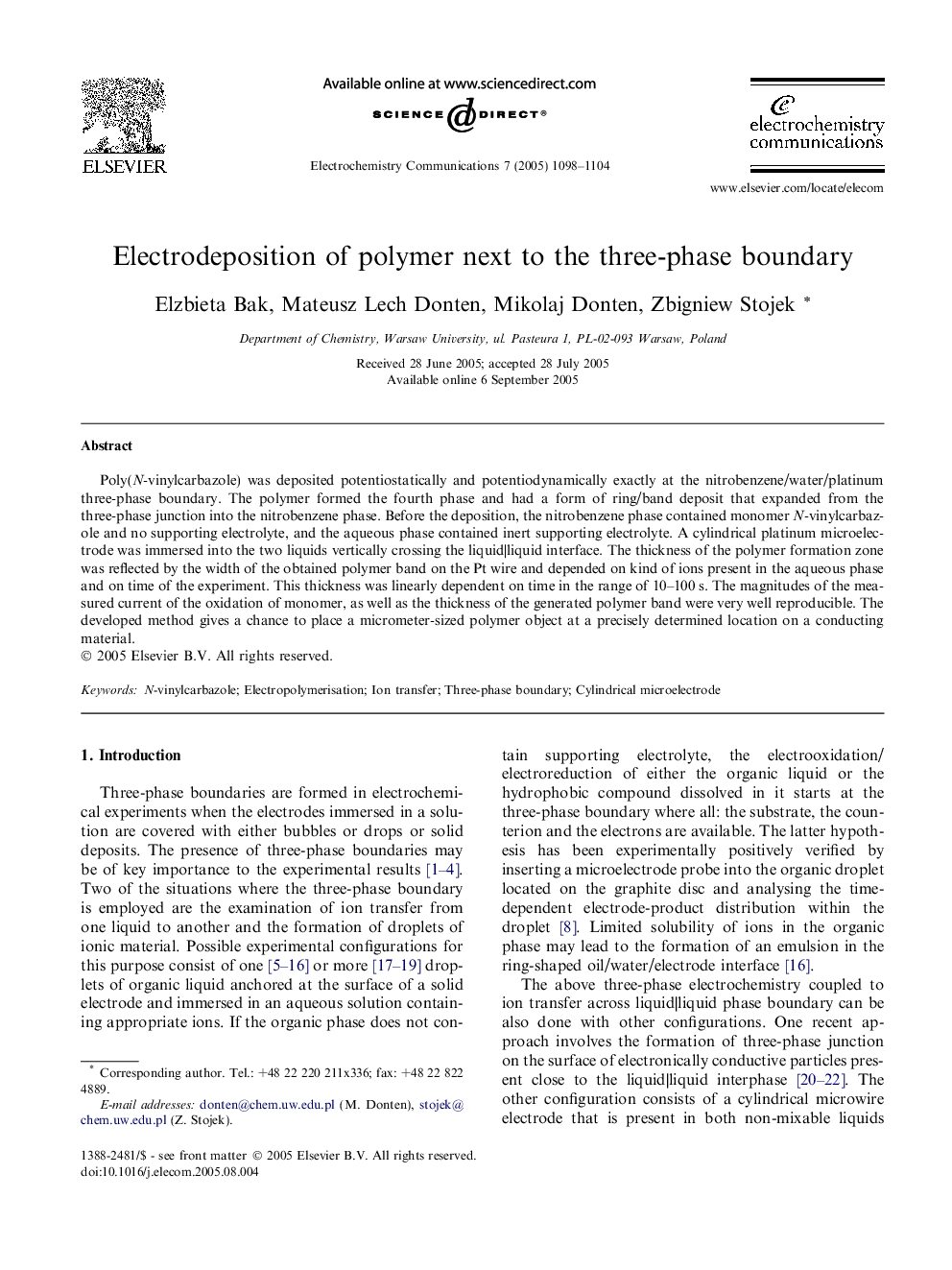| Article ID | Journal | Published Year | Pages | File Type |
|---|---|---|---|---|
| 10267062 | Electrochemistry Communications | 2005 | 7 Pages |
Abstract
Poly(N-vinylcarbazole) was deposited potentiostatically and potentiodynamically exactly at the nitrobenzene/water/platinum three-phase boundary. The polymer formed the fourth phase and had a form of ring/band deposit that expanded from the three-phase junction into the nitrobenzene phase. Before the deposition, the nitrobenzene phase contained monomer N-vinylcarbazole and no supporting electrolyte, and the aqueous phase contained inert supporting electrolyte. A cylindrical platinum microelectrode was immersed into the two liquids vertically crossing the liquid|liquid interface. The thickness of the polymer formation zone was reflected by the width of the obtained polymer band on the Pt wire and depended on kind of ions present in the aqueous phase and on time of the experiment. This thickness was linearly dependent on time in the range of 10-100Â s. The magnitudes of the measured current of the oxidation of monomer, as well as the thickness of the generated polymer band were very well reproducible. The developed method gives a chance to place a micrometer-sized polymer object at a precisely determined location on a conducting material.
Keywords
Related Topics
Physical Sciences and Engineering
Chemical Engineering
Chemical Engineering (General)
Authors
Elzbieta Bak, Mateusz Lech Donten, Mikolaj Donten, Zbigniew Stojek,
